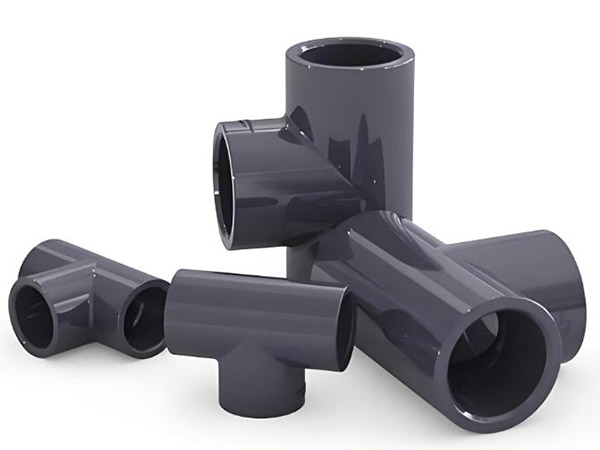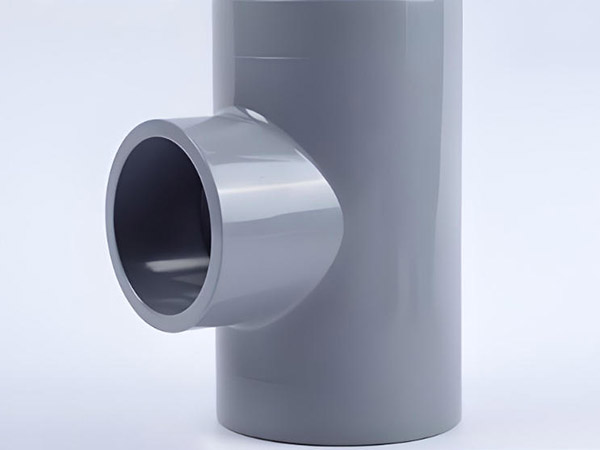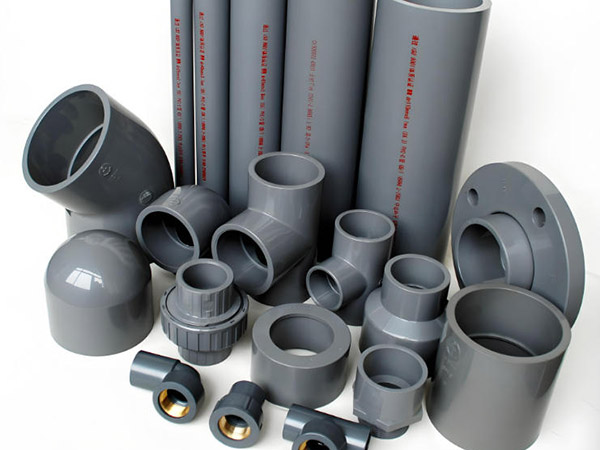In modern water supply and drainage systems, the safety, durability, and sanitation of hot water piping have always been key concerns for users and engineering teams. With the development of the construction industry and people’s pursuit of a higher quality of life, CPVC (chlorinated polyvinyl chloride) pipes and fittings have gradually become an ideal choice for hot water systems. Hot water CPVC pipe fittings, in particular, are widely used in residential, commercial, and industrial hot water supply systems due to their excellent heat and corrosion resistance and long service life.

Product Materials and Performance
Hot water CPVC pipe fittings are made from a specially formulated chlorinated polyvinyl chloride (CPVC) material. Compared to ordinary PVC, CPVC undergoes chlorination modification in its molecular structure, significantly improving its heat resistance and enabling it to withstand water temperatures up to 93°C for extended periods. Furthermore, CPVC is extremely chemically stable and resistant to corrosion from most acids, alkalis, and salt solutions. This prevents corrosion or scaling during hot water transportation due to water quality issues.
Furthermore, CPVC pipe fittings have a smooth surface and low internal friction, effectively reducing energy loss during fluid transportation. Compared with metal pipe fittings, CPVC pipe fittings are lightweight and easier to install, greatly reducing labor and construction costs.
Temperature and Pressure Resistance
Hot water piping often faces the dual challenges of high temperatures and high pressures. CPVC pipe fittings typically have a temperature resistance range of 0°C to 93°C, meeting the requirements of residential hot water, central hot water circulation systems, and industrial hot water distribution. At room temperature, the fittings can withstand high operating pressures. Even at higher temperatures, they maintain excellent strength and toughness, resisting cracking or leakage. This performance makes them a reliable alternative to traditional metal fittings.

Hot water CPVC pipe fittings installation methods
Hot water CPVC pipe fittings are installed using either solvent bonding or mechanical connection. Solvent bonding is not only simple to use but also provides a secure connection and excellent sealing, effectively preventing leaks. Compared to copper or galvanized steel pipe, CPVC fittings require no welding and are not susceptible to electrochemical corrosion, making installation safe and efficient.
In actual engineering applications, hot water CPVC pipe fittings are available in a variety of sizes and types, including elbows, tees, straight connections, valves, and adapters, meeting the design requirements of complex piping systems. Its modular characteristics enable construction parties to configure flexibly and shorten the installation period.
Hygienic and Environmentally Friendly Performance
Hot water pipe fittings are in constant contact with domestic hot water, making their hygienic performance crucial. CPVC is inherently free of harmful substances and complies with multiple international drinking water safety standards. It does not leach heavy metals or toxic substances into the water, ensuring pure water quality. Its excellent antibacterial properties make it less susceptible to microbial and algae growth, making it ideal for use in high-quality water supply applications, such as domestic hot water supply, hotel hot water systems, and hospitals.
CPVC is also recyclable, offering environmental advantages. In line with modern green building concepts, using CPVC hot water fittings not only improves project sustainability but also reduces long-term operation and maintenance costs.

Hot water CPVC pipe fittings application areas
Residential hot water systems: Used in kitchen and bathroom hot water pipes to ensure a stable and long-term water supply.
Hotels and apartment buildings: Used in central hot water supply systems to ensure stable large-scale simultaneous water use.
Industrial hot water distribution: Suitable for applications in factories requiring corrosion-resistant and heat-resistant pipes.
Medical and public facilities: Ensure the hygienic safety of hot water and avoid water contamination caused by metal pipe fittings.
Product Advantages Summary
Excellent heat resistance allows for long-term use in high-temperature environments;
Corrosion resistance is unaffected by water quality, preventing scaling and rust;
Simple installation, with a quick and safe solvent bonding method;
Lightweight, reducing transportation and construction costs;
Complies with drinking water safety standards, ensuring healthy water use;
Environmentally friendly and recyclable, aligning with sustainable development trends.






















